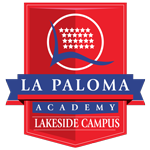Whether large or small, technical innovations have always resulted in positive changes in education. New tech builds upon old tech, and we find ourselves where we are today, which probably started nearly 100 years ago.
It may not seem very high tech now, but when radio burst upon the scene in the 1920s, it was considered miraculous. You could sit in your home in Iowa and hear an orchestra from a hotel in New York—something most non-New Yorkers would never otherwise hear during their lifetimes. Not only entertaining, radio also created a new wave of learning as on-air classes began popping up for any student within broadcast range.
Other technologies that were utilized by educators—and many of which today’s students may find hilarious—are:
- The overhead projector – First developed in 1853, the overhead projector would become a staple of American classrooms 100 years later, in the 1950s. Rather than be limited to writing on a chalkboard, teachers could create and write on transparent film for an entire classroom to see.
- The ballpoint pen – This miraculous writing instrument was the first pen that didn’t require it constantly be refilled with, or dipped in, ink. Starting in 1945, the ballpoint pen had Americans quickly saying goodbye to their messy fountain pens and, for the first time, students could write in ink quickly and cleanly.
- The mimeograph – Invented by Thomas Edison in 1887, mimeographs were like small, inexpensive printing presses and they were a ubiquitous presence in classrooms in the 1950s and 1960s. Teachers could type a page of copy—usually a quiz or test—create a stencil from the page, wrap it on a circular drum and crank out copies for each and every anxious student.
- Television and NET – National Educational Television (NET) debuted in 1954, not long after the first televisions started appearing in peoples’ homes. NET broadcast adult educational programs like About Ceramics, Adventures in the Arts, and Biology, but also had broadcast classes that K-8 students could enjoy such as The Adventures of Tom Sawyer and Children’s Corner. Televisions were wheeled into classrooms so students could watch NET’s classes for free. In 1970, NET evolved into the Public Broadcasting Service (PBS) which, sadly, no longer airs About Ceramics.
- The photocopier – At the dawn of the 1960s, Xerox introduced the first commercially available photocopier. While expensive, the price would come down throughout the ’60s so that by the end of the decade, mimeographs were being replace in schools by high-speed copiers.
- The handheld calculator – Early in the 1970s, calculators became small and affordable and, at first, hated by schools. In 1975 the National Advisory Committee on Mathematical Education suggested that only those in 8th grade and above should have access to calculators. By 1980, the National Council of Teachers of Mathematics recommended that they should be used at all grade levels. Calculators made it possible to learn mathematical concepts without stressing over computational errors.
Starting in 1984 with Apple’s first Macintosh—and augmented by the first public, commercial use of the internet nine years later—the current technology has evolved from laptops to smartphones to tablets to Chromebooks, working its way into nearly every classroom. Like all the above examples, today’s use of technology in the classroom should be embraced by parents everywhere. Why? Because today’s technology provides many benefits, including:
Instant access to knowledge
Kids can look up words or Google concepts or ideas on the fly. Instead of stopping to find a dictionary to get the definition of a word, online dictionaries can give a definition in seconds. Where it once required a trip to the library to research a subject or search for information, Google can tell a child anything in seconds. Having all the world’s knowledge available from anywhere is pretty empowering.
Preparation for the future
Every parent has probably been behind someone at the grocery store who is trying to pay with a credit or ATM card and is totally confused by the card reader. And every parent probably knows someone who can’t figure out how to answer their smart phone or return a text. Technology moves quickly and it’s easy to be left behind. Classroom tech assures that your student will remain on technology’s cutting edge, which is where the future lies.
A blended learning environment
Parents needn’t worry that technology is going to replace the standard educational model. It’s been shown that blended learning gives students the greatest educational advantage. Blended learning provides monitored, online education that can be accessed from home with standard, brick-and-mortar educational techniques at school. Learning can be customized to each student, and is based on mastery of subjects, not based on getting to the next chapter by the end of the week.
Collaboration with others
A U.S. Department of Education study reported that, by working on group projects, classroom technology encouraged collaboration through mentoring and creative cooperation. Students even learned to work with those in other schools, other states, and other countries. Collaboration is an important component in many careers where team participation is required.
Active vs. Passive Learning
Want to doze off quickly? Listen to a lecture on … well, just about anything. At one time, students sat silently, perhaps taking notes, while the teacher taught. That’s passive learning because it requires no participation from the student. Today, concepts are taught using simulations, animation or video, and students become active participants in the learning process, making discoveries on their own or in a group of peers.
There were those who worried about the negative effects that radio, television, calculators, or ballpoint pens would have on education. As it turned out, all of those technologies played a positive role in advancing educational techniques and providing a better method for learning. Today’s technology is no different. Classroom tech is essential in preparing students for the future.


